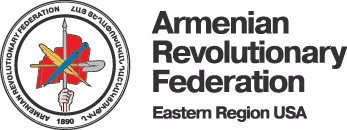From Palu and Hussenig to Petoskey: Armenian Students at U-M in the 1880’s

An extraordinary feeling of Armenian pride swelled up in me as I read—and re-read—the interesting article written by Birmingham, Mich. resident Harry Kezelian III (University of Michigan Law School alumni, 2010) that appeared in the fall 2015 issue of the U-M Armenian Studies Program Newsletter.
I was amazed that as a native Michigander, it was 1960 before I had trekked the 30 or so miles north to Flint from my Pontiac home, while my fellow Armenian countrymen had been much more adventurous, traveling thousands of miles from their homes: Boghos Simonian from Palu and Khachadour Nahigian from Hussenig near Kharpert were the first two Armenians to attend U-M, according to Kezelian. They were “Michigan Men” long before “Bo” Schembechler, Mark Gavoor, and Dr. Jack Kevorkian. Simonian and Nahigian had both graduated with B.A.’s from Armenia College, the American school in Kharpert, later renamed Euphrates College in 1888 by government order.
Simonian obtained his M.D. from U-M in 1889. Nahigian attended U-M for the 1886-87 academic year, listed only under “Students Not Candidates for Degrees,” studying natural science and mathematics. A prominent Armenian Protestant, Nahigian returned to Armenia College to teach algebra, geometry, and trigonometry. The college had 7 full professors, all Armenian, but in 1915 they were arrested like hundreds of other intellectuals and killed. Nahigian was killed on June 20, 1915 in a group that included two of the other professors. Four others were murdered, two died in jail of disease, and one was spared. Thus began the Ottoman Turks’ genocidal rampage of the Armenian nation.
Another friend recently told me there were plaques displayed in downtown Petoskey in the Gaslight District dedicated to Armenians who had become prominent and respected local businessmen over 100 years ago. And so I began the long search to follow the trail of these daring and brave Armenians, who became fluent in the English language and opened businesses in the snowbelt of Northern Michigan.
My sleuthing began by information willingly researched by Mary Beauchamp of the Petoskey Library and Karl Crawford, superintendent of the Greenwood Cemetery in Petoskey. He forwarded me a vast amount of information, including genealogical reports, newspaper obituaries, death certificates, and a photo of a G and A building—Gulesarian and Altoonjian were members of several “Persian families” in the community at that time who constructed that building in 1907.
The documents told of the fine craftsmen in the area on Lake and Petoskey Streets in 1920-40: “Vaughn Gulesarian was an expert on oriental rugs and gems. Mr. and Mrs. Dick Gulasarian created jewelry, rugs, and embroidery. Their sons Aram and Martin also practiced in Petoskey. The Altoonjian family ran the Persian Bazaar on Lake Street.”
What was the attraction to this location by these very early Armenian settlers?
Petoskey is located on beautiful Lake Michigan’s Little Traverse Bay and attracts thousands of well-heeled resorters each summer season. The population of Petoskey soared during the warm months of summer then as it still does now. The Gaslight District even today features many fine clothing and home furnishing stores, restaurants, and ice cream shops catering to a very large tourist population.
The Petoskey Normal School and Business College was housed in the Gulasarian block at 307-309 East Lake St., with room for 300 people. Even today the faded bricks visibly identify this as a business college.
A note of historical interest says the brick block corner of Mitchell and Howard Streets was sold for $10,000 to Asadoorian and Simonian, so apparently the business acumen of the Armenians had led to financial success.
Among the vast array of information I was sent by Karl Crawford was an amazing full-length photo of a heavily mustached Asadoorian wearing a head-to-toe woven and embroidered jacket, trousers, and headdress, smoking a very long pipe surrounded by huge oriental carpets, throws, table covers, and slippers—a photo the likes of which I had never seen before.
Many of these early ancestors of ours are buried in Petoskey’s Greenwood Cemetery, their markers containing Armenian names that have withstood the test of time. Their names are quite visible and astonishing and chilling for me to witness. As soon as the snow melts I absolutely will visit these gravesites with flowers to pay my respect.
These early settlers traveled—and are buried—thousands of miles away from historic Armenia, but surely at their will their spirit will freely travel to Hussenig and Palu. Their hearts, like those of all Armenians, will always belong to Haiastan. The Turks of then and now can never destroy that.
Much more information will be included in the next Michigan Hye Beat column about the Armenians of northern Michigan. Many more Armenians crossed the oceans and settled up north. Their names appear in the volumes of information forwarded to me. They were 100 years ahead of their time, the 1890’s version of “Shark Tank” proving that neither Sultan Abdul Hamid, the treacherous murderer of Armenians in 1894-96, nor Talat Pasha, one of the architects of the 1915 genocide, could suppress the entrepreneurial spirit of tenacious Armenians.
Of future note, one of these Armenian families in Petoskey raised a local American youth, that interview also will be forthcoming.
Source: Armenian Weekly Mid-West

